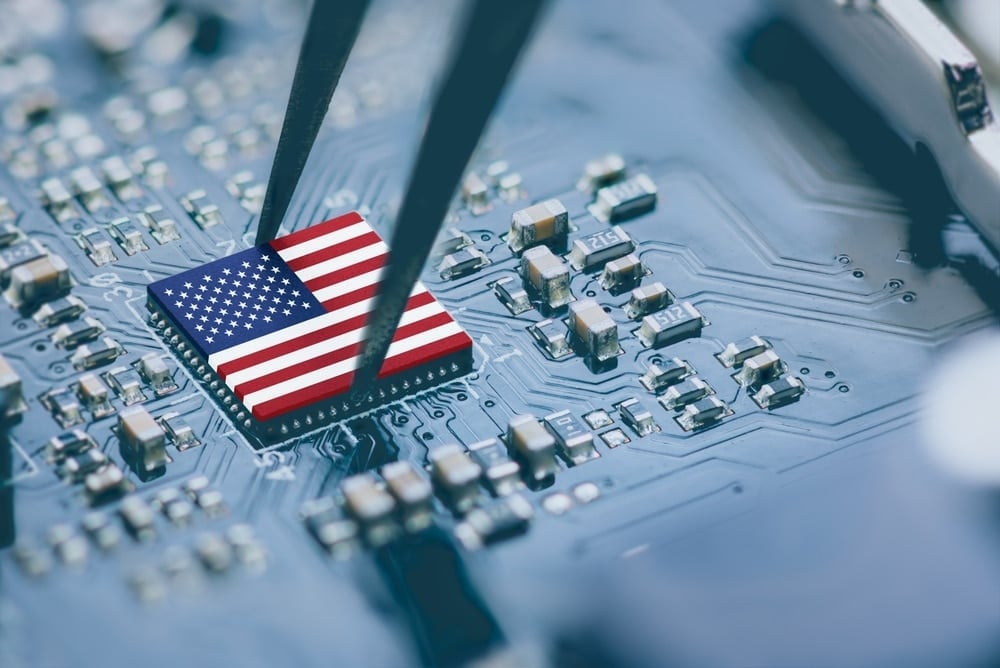The semiconductor Chip War is one of the world's most political and complex chess matches. Here's how things are playing out...and what it will mean for investors.
May 17, 2023
When it comes to investing, we tend to oversimplify things and think in terms of binary outcomes.
When markets change, we think of one company as the clear victor and another as a clear loser. Amazon (Nasdaq: AMZN) beat WalMart (NYSE: WMT) once retail went digital. Netflix (Nasdaq: NFLX) beat Blockbuster as soon as DVDs replaced video cassettes. Insert your favorite other example of <Company 1> disrupting <Company 2> as soon as things changed in its industry.
In reality, markets are a lot more complex than that. Winners and losers get decided by much more than just changing trends or technologies. Sometimes success comes from hiring the right key people or high-performing executives. Other times it’s political favoritism or subsidies providing a key advantage. And sometimes it’s just being lucky, being in the right place at the right time.
I mention all of this to set the stage for one of the world’s most complex industries: semiconductors. The global semiconductor market is now worth more than $500 billion and will reach $1 trillion by the end of the decade. Chips have found their way into everything, from dishwashers and toasters to satellites and jet fighters.
With no disrespect to the importance of kitchen appliances, several of those applications have national security implications. Governments want to hoard the IP and supply of cutting-edge chips as a security advantage. If push were ever to come to shove in the global arena, reliable access to high-performance chips could provide an important military edge.
Because of this, we’ve begun referring to the political chess match associated with securing chip supply as The Chip War. The name is also the title of a best-selling book by Chris Miller, who recently appeared as a guest at MIT’s Future Compute conference.

A natural question that arises from those following the Chip War is “who’s winning?”
And of course, we again frame the answer as a binary outcome. Will the United States or China emerge as the global microchip superpower? Or would China beat the rest of the world if it goes to war over Taiwan?
Yet Miller suggests that the answers and the outcomes from the Chip War will be much more complicated.
For one, international trade tensions are so thick that you could cut them with a knife right now. The US has imposed a expansive list of trade exemptions on China and other countries, excluding certain products from being sold to them.
One of the most important products on that list is ASML’s (Nasdaq: ASML) extreme ultraviolet lithography machines. These EUV machines are very complex: they each contain more than 100,000 components, include more than a mile of cable wiring, take two years to fully assemble, and cost $150 million apiece. Yet they are absolutely necessary for the production of cutting-edge chips. And ASML has a monopoly in this space, selling 100% of the world’s EUV machines.
Things get interesting because ASML is a Netherlands-based company. Yet because there is quite a bit of United States-based IP and patents embedded in those 100,000 components, ASML must play by America’s rules when it comes to restrictions about selling to China.
The US took things a step further last summer, when it also restricted both NVIDIA (Nasdaq: NVDA) and AMD (Nasdaq: AMD) from selling its highest-performance GPUs to either China or Russia. GPUs (‘graphics processing units’) primarily do the computing required for neural networks and AI applications like ChatGPT’s machine learning inference. They are the workhorses of the computing renaissance. And the US is placing new bumpers on where they can and can’t be sold.

Before we go too far down this political rabbit hole, let’s consider a few key takeaways for investors.
For one, the “do not sell to China” rules will cause a shift in the regional sales of chip designers like NVIDIA and AMD and also of equipment manufacturers like ASML. China spends more money on importing chips every year than it does on importing oil, though political sanctions are now chipping away at that number. The mounting trade tensions will likely lead to increasing government subsidies in other countries, very similar to America’s $50 billion CHIPS Act. Watch for Germany, Japan, and others to announce programs worth tens of billions of dollars to fund chipmaking innovation and domestic security of supply.
Furthermore, smaller chip fabricators who aren’t named Taiwan Semiconductor (NYSE: TSM) will add production capacity in response to increasing local demand. GlobalFoundries (Nasdaq: GFS), who was previously the manufacturing arm of AMD who’s now independent, could emerge as a big winner from this. Intel’s (Nasdaq: INTC) Foundry Services could be another victor of the quest for domestic supply.
In addition to production, watch for innovation in chip design as well. DARPA has funded decades of research for chipmaking innovation. With the stakes now higher, there will be further academic programs and competitions at top-ranked universities to encourage lower-cost and higher-performance chips to make these government-funded programs more effective. We’ll see new architectures arise – such as analog chips being manufactured in three dimensions – to bring down the cost of designing custom ASICs. We’ll see new materials – such as Wolfspeed’s (Nasdaq: WOLF) silicon carbide – be used for certain applications. We’ll see the US woo key executives and leaders from other countries, eager to find the next generation’s Jim Keller to raise the bar when it comes to design and engineering.
“Winning” is a clear outcome for sporting events. When the buzzer hits zero, the team with the higher score wins the game. Their fans cheer loud and then go home happy.
The Chip War is a more complicated game, and it will provide for multiple winners and multiple losers. ASML, NVIDIA, and AMD will continue to dominate the game they’re currently playing for the foreseeable future, though we’ll see a shift in the regions they currently serve. China and the US are writing new game rules for design, with programs intended to gain a performance edge and at lower costs. New technologies like quantum computing are waiting on the bench, eager to get into the game and show what they can do.
And just as the Space Race eventually brought government-funded innovation to the mass market, the Chip War will similarly provide a bounty of opportunity for sophisticated chipmakers and their investors.

Already a 7investing member? Log in here.